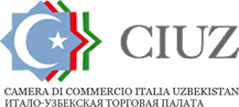On the occasion of Uzbekistan’s Independence anniversary celebrations, a plov cooking competition was held at the Uzkimyosanoat headquarters, a state-owned Uzbek company in the chemical sector, featuring over 200 directors and employees of the company.
Such initiatives are not uncommon in this Central Asian country, where universities have also been organizing “plov championships” for years as part of festivals and performances celebrating Uzbek traditions.
Plov (or plof or palov), which falls under the pilaf rice preparations common in the Middle East and Central Asia, is indeed the most famous dish in Uzbek cuisine, to the extent that it is considered a true symbol of its culture.
There are at least 60 regional variations, but the recipe can vary from family to family: choyxhona plov (the most common), chalov, and plov from Tashkent, Samarkand, and Fergana are just a few of the regional recipes found in Uzbekistan.
The dish, typically made with rice, lamb or mutton, carrots, dried fruits, and nuts is central to all major celebrations and festivals in Uzbek culture: during national holidays, at weddings, and even as a simple gesture of hospitality, its preparation represents a moment to strengthen social bonds and promote values of solidarity and unity.
Plov is so integral to the daily life of Uzbeks that, similar to the “Big Mac Index” in the United States, the “Plov Index” has been adopted for years as an informal economic indicator to measure the country’s inflation rate.
For these reasons, the tradition of plov was inscribed by UNESCO on the List of Intangible Cultural Heritage of Humanity in 2016.
Sources:
https://ich.unesco.org/en/RL/palov-culture-and-tradition-01166
https://uznews.uz/posts/50487
https://tsue.uz/en/news/tdiuda-osh-chempionati-otkazildi-jami-60-dan-ziyod-qozon-osildi
****
For additional information, please contact CIUZ’s secretariat at the following address:
Samantha Rampini
Chamber of Commerce Italy-Uzbekistan
Via Monte Rosa, 93
20149 Milano
cell. +39 349 8847924


